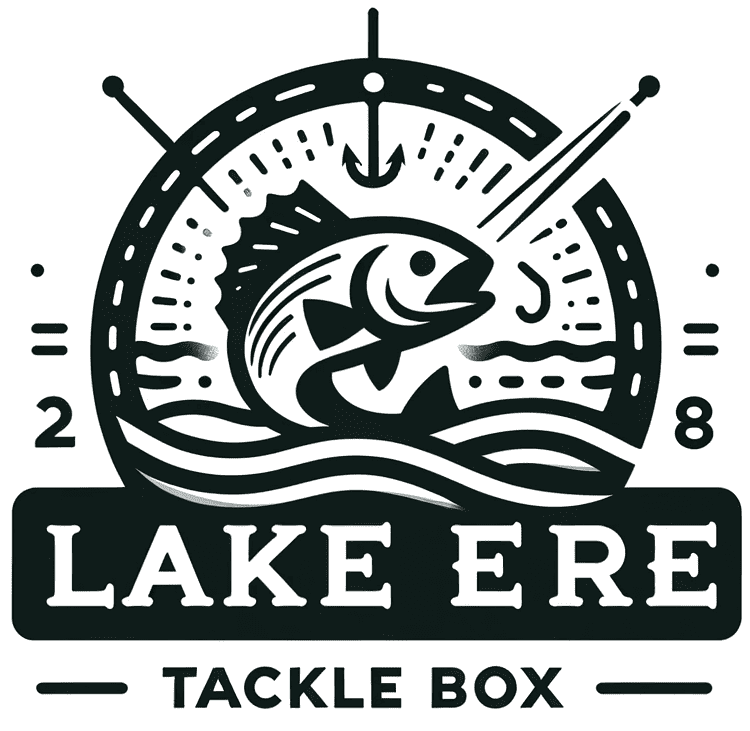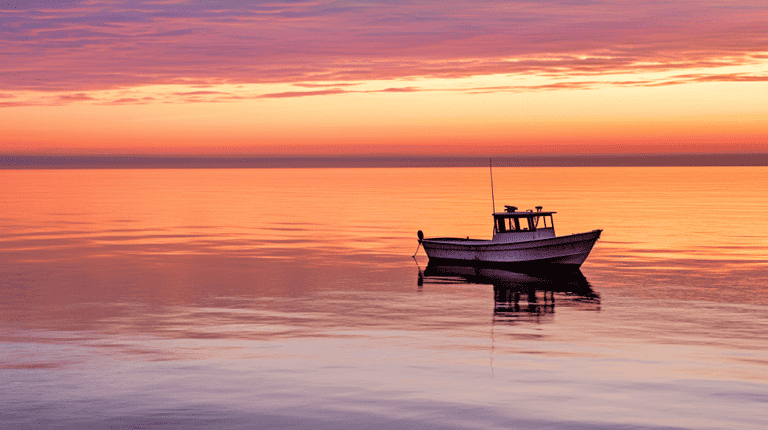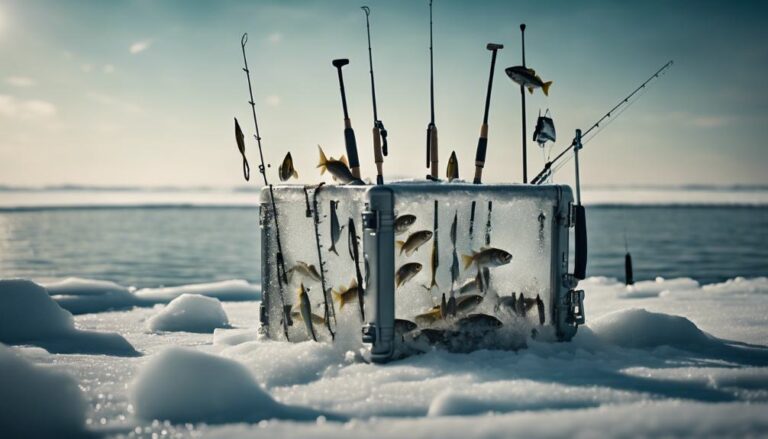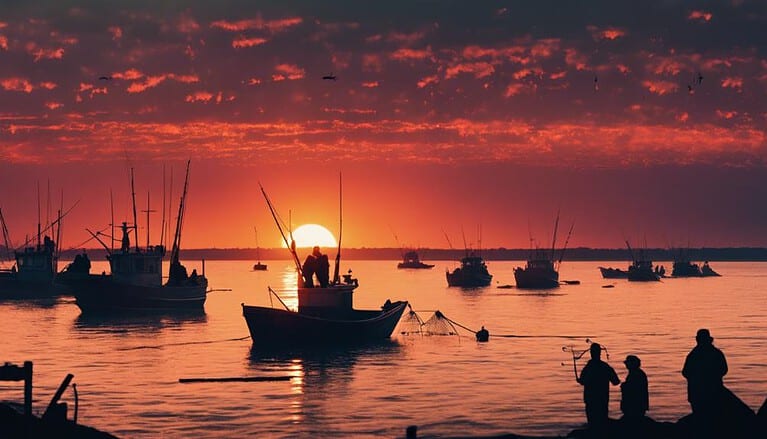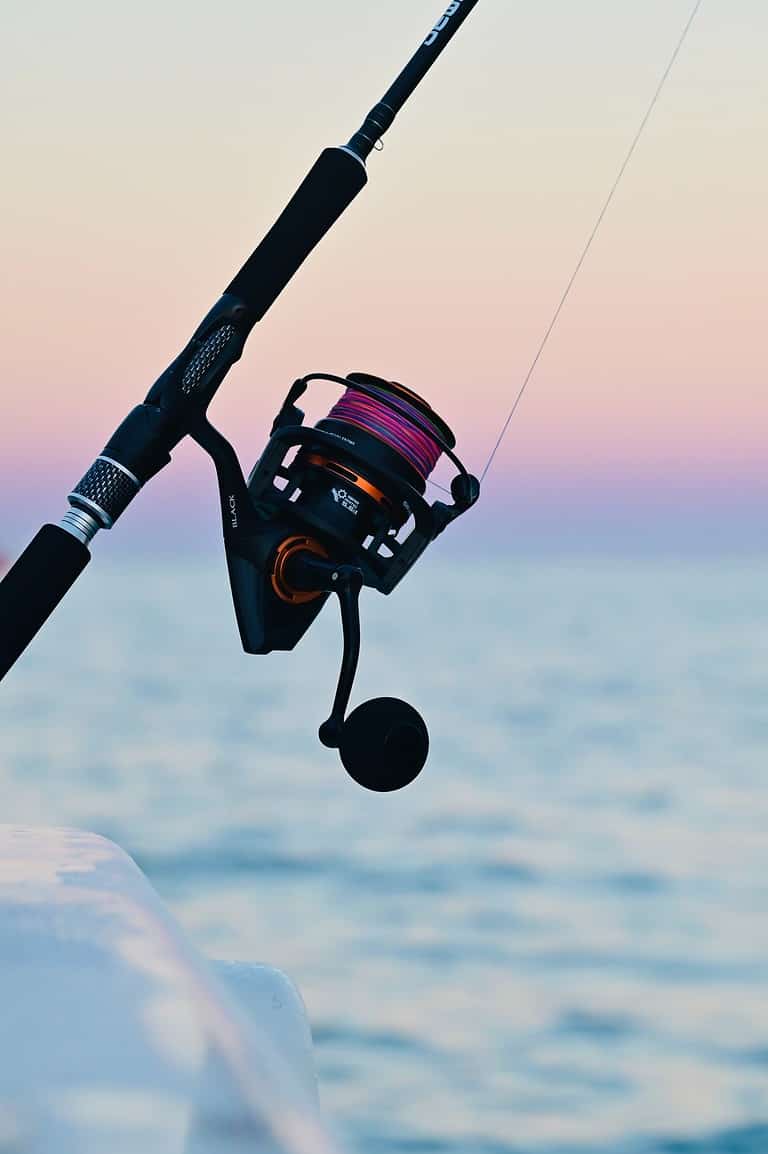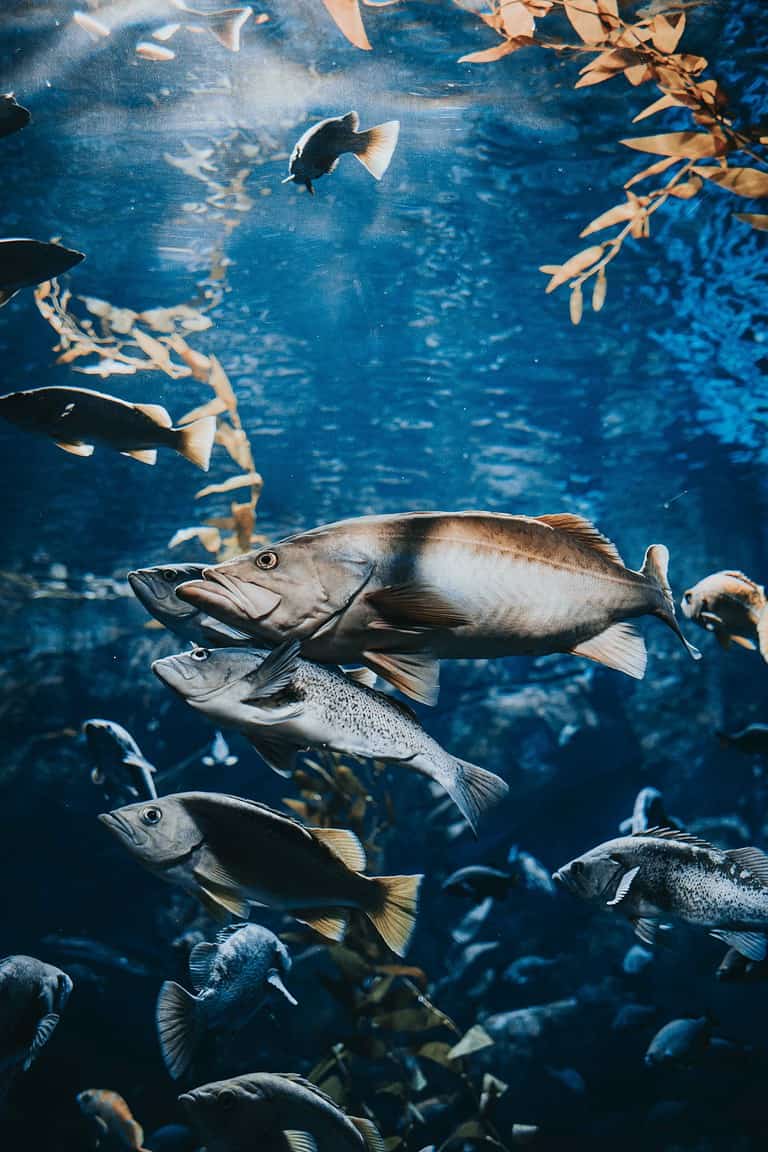Fishing on Lake Erie: From Indigenous Practices to Modern Challenges
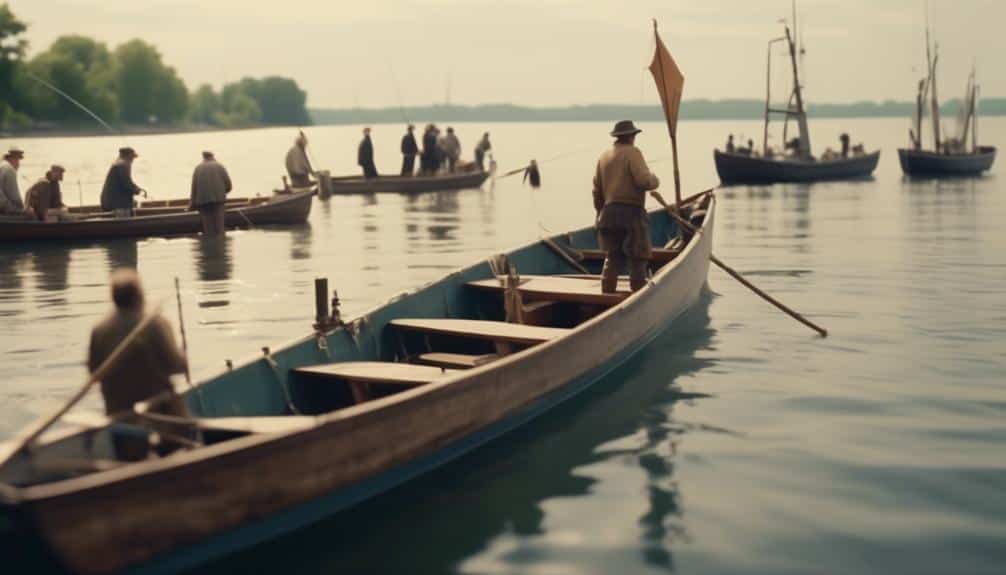
Like a river cutting through rock over millennia, shaping the landscape, the evolution of fishing on Lake Erie has been a force of change, both shaping and reflecting the societies that have relied on its waters.
You’ve likely heard tales of the abundant catches and the pioneering techniques developed by Native Americans and early settlers, a testament to human ingenuity and the bountiful nature of the lake.
The transition to commercial fishing in the 19th century marked a significant shift, bringing about innovations in fishing gear and methods, yet also introducing challenges that have echoed through time, such as overfishing and pollution.
Now, as you stand on the precipice of the present, looking back at the winding path that led to today’s moribund state of the U.S. fishery on Lake Erie, you might wonder how the past informs the future.
The efforts underway to implement sustainable practices and restore the lake’s ecosystem offer a glimmer of hope, but the journey ahead is fraught with uncertainty.
Where do we go from here, and how do the lessons of the past shape the future of fishing on Lake Erie?
The answers lie just beneath the surface, in the depths of history and the waters of the lake itself.
Key Takeaways
- Indigenous fishing practices on Lake Erie demonstrated sustainable and environmentally conscious methods, such as using weirs and drag nets made of brush.
- The commercial fishing boom in the 19th century led to overfishing, depletion of key species, and industry decline.
- Ecological challenges, including disappearing species and declining fish populations, pose risks to the sustainability of fishing on Lake Erie.
- Regulatory shifts towards sustainability and environmental restoration, such as limits on catch sizes and types, pollution control measures, and seasonal fishing restrictions, have been implemented.
Indigenous Fishing Practices
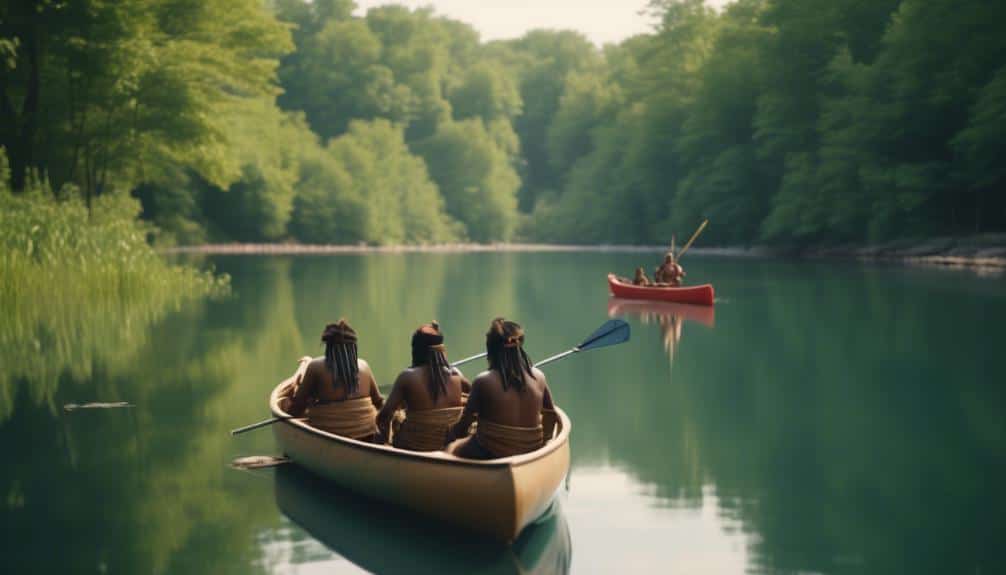
Exploring the indigenous fishing practices on Lake Erie reveals a sophisticated use of weirs and drag nets made of brush, illustrating a deep understanding of the local aquatic ecosystem. Native Americans, adept at harnessing the natural environment, strategically placed these weirs at river mouths and along the shallow waters of Lake Erie, capitalizing on the migratory patterns of various species of fish. This method wasn’t just about catching fish; it was a sustainable way to ensure a steady supply, reflecting an intimate knowledge of the life cycles of these species and their ecological interactions.
The use of drag nets made of brush, another ingenious technique, allowed for the efficient harvesting of fish in areas where other methods might’ve been less effective. These nets, when pulled through the water, would entangle fish without causing significant harm to the aquatic flora. This practice underscores a balance between the need for food and the preservation of the ecosystem.
Such fishing methods, developed over generations, demonstrate a remarkable adaptation to the changing conditions of Lake Erie. Despite the shifts in fish populations and the introduction of more stringent fishing regulations, the legacy of these indigenous practices endures, offering valuable lessons in sustainability and environmental stewardship.
Commercial Boom and Decline
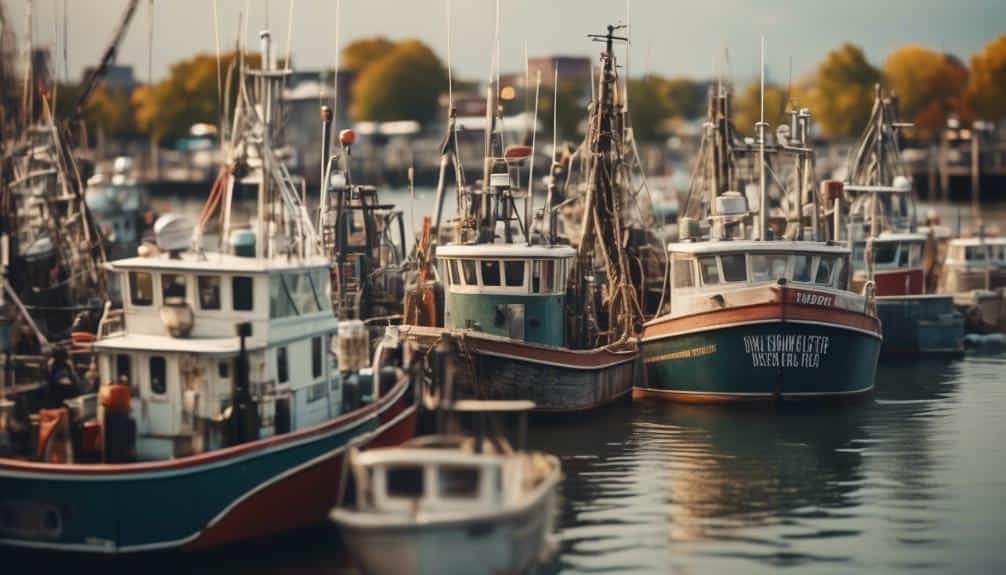
By the 1830s, commercial fishing on Lake Erie had begun, marking a pivotal shift from indigenous practices to industrial-scale exploitation that would eventually lead to significant ecological consequences. This era of commercial boom was characterized by the rapid expansion of fishing operations into the main fetch of the lake, significantly increasing the catch. However, this period of prosperity was short-lived, as the industry faced a steep decline by the late 19th century due to several factors:
- Overfishing: The relentless pursuit of profit led to the depletion of key species, including the blue pike, lake sturgeon, cisco, and lake herring. This unsustainable harvest rate was a primary driver of the industry’s downfall.
- Environmental Changes:
- Pollution: The Great Lakes, and Lake Erie in particular, became dumping grounds for industrial waste, culminating in events like the Cuyahoga River Fire of 1969.
- Habitat Degradation: The modification of lake ecosystems further stressed fish populations.
- Mercury Levels: Elevated mercury levels in fish prompted a ban on commercial fishing, effectively collapsing Erie’s fishing culture.
Despite these challenges, efforts to improve water quality and restore fish populations have made positive impacts, demonstrating the resilience of Lake Erie and its community.
Ecological Challenges
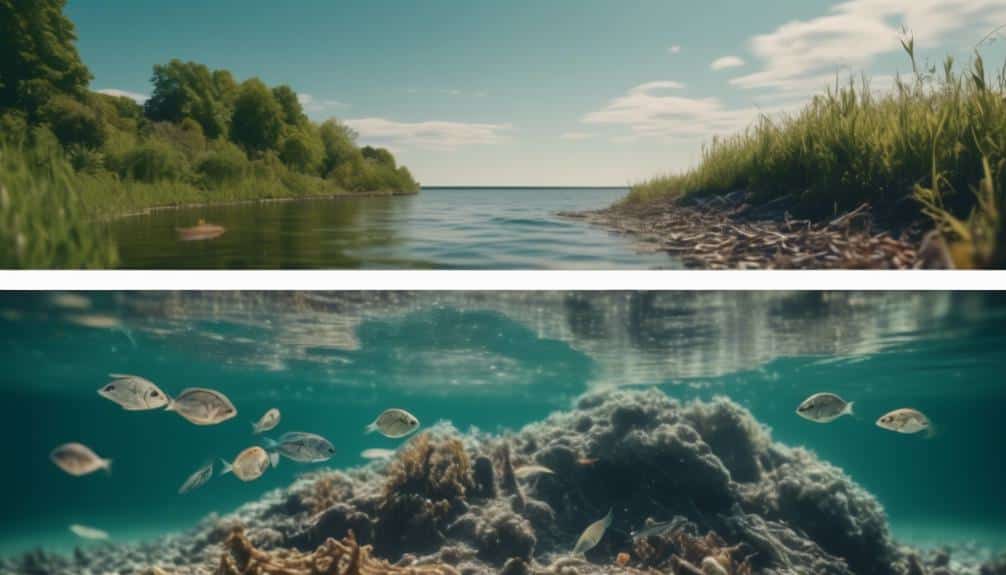
While the historical commercial boom and subsequent decline have shaped the framework of Lake Erie’s fishing industry, the lake now faces pressing ecological challenges that demand attention and action. The sustainability of the fishery is at risk due to disappearing species and a steady decline in fish populations. Pollution, particularly in tributaries like the Cuyahoga River, compounds these issues, disrupting the habitat and food sources essential for fish survival.
Selective overfishing, targeting high-value species, has exacerbated this decline, leading to a precarious situation where the stability of Lake Erie’s fishery hangs in the balance. This situation not only affects the ecological makeup of the lake but also poses significant economic implications. The loss of species and diminishing fish populations threaten the commercial viability of fishing in Lake Erie, highlighting an urgent need for sustainable fishing practices.
Addressing these ecological challenges requires a comprehensive approach that considers the interconnectedness of species, habitats, and human activity. Sustainable practices, aimed at reversing the trend of overfishing and mitigating pollution, are critical to ensuring the long-term viability of Lake Erie’s fishery.
Regulatory Shifts
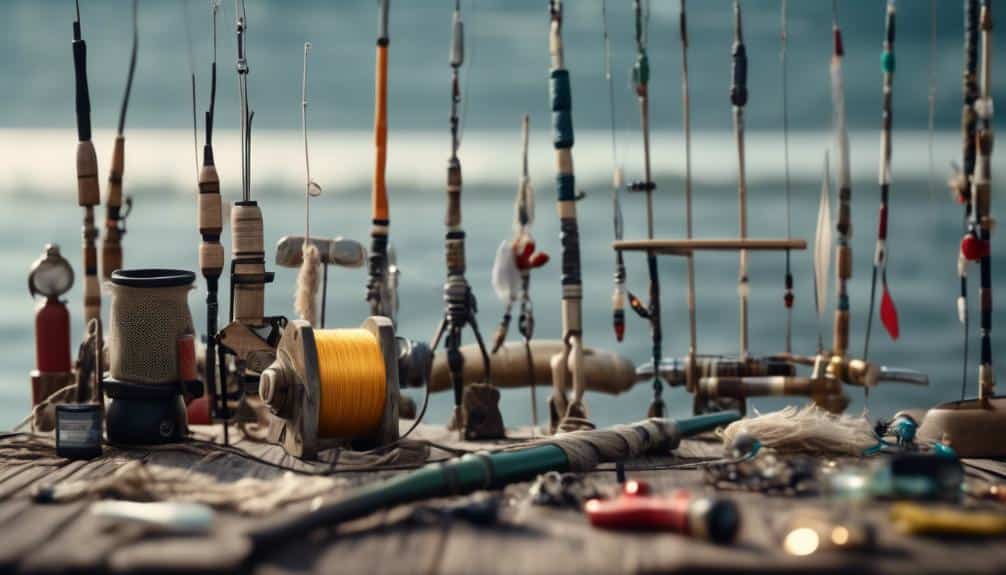
In response to the pressing ecological challenges and declining fish populations, fishing regulations on Lake Erie have seen significant shifts aimed at sustainability and environmental restoration. The Department of Natural Resources, alongside the Ohio Department of Natural, has played a pivotal role in steering these changes, reflecting a deep commitment to both the lake’s ecological health and the livelihood of commercial fishermen.
Analyzing the impact of these regulatory shifts reveals a complex interplay of factors:
- Overfishing and Pollution
- The initial causes of concern were overfishing and pollution, leading to a dire need for regulatory intervention.
- Sub-lists:
- Limits on catch sizes and types.
- Pollution control measures.
- Seasonal fishing restrictions.
The effectiveness of these shifts varied, with some measures bringing immediate benefits, while others required adjustments and fine-tuning.
Ongoing discussions center on the sustainability of fishing on Lake Erie, with a focus on adapting regulations to emerging ecological trends and commercial needs.
These regulatory shifts haven’t only aimed to mitigate past damage but also to ensure the future viability of Lake Erie’s fishery, balancing ecological health with commercial interests.
Technological Advancements
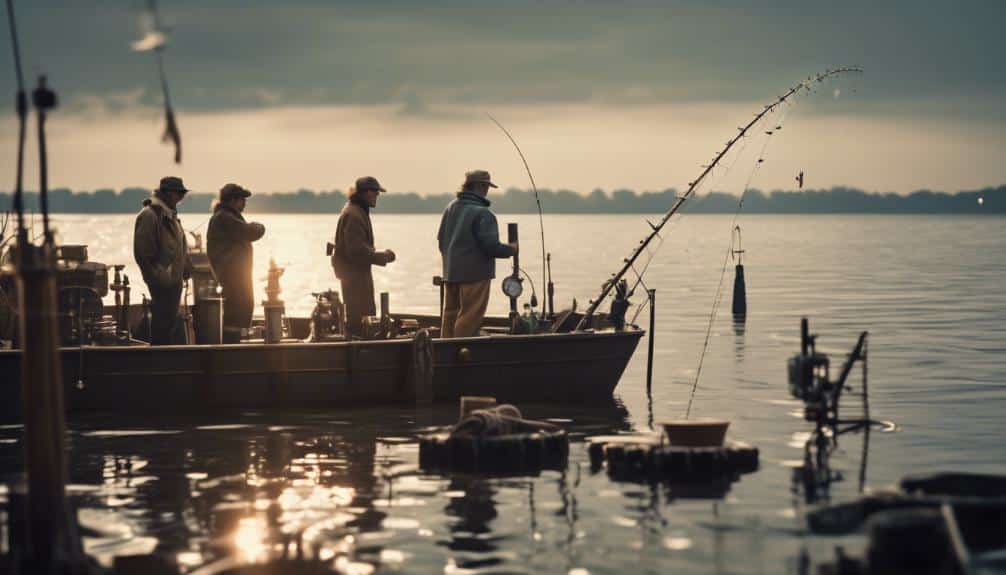
Technological advancements have revolutionized the Lake Erie fishing industry, markedly altering the types and quantities of fish harvested. The introduction of modern fishing gears and methods has significantly transformed the landscape of fishing in the region. These innovations haven’t only increased the efficiency of fishing practices but also impacted the diversity of fish populations in Lake Erie. Notably, species such as lake trout and yellow perch, once abundant and a vital food source for local communities, have experienced shifts in their populations due to these advancements.
The disappearance of certain species underscores the profound effect of technological progress on the ecological balance and the stability of the fishery. Historical and current data on walleye and yellow perch exemplify how technological advancements have shaped the dynamics of fish populations. The present state of the U.S. fishery, with its reliance on sophisticated fishing techniques, reflects a significant departure from traditional practices.
This evolution, however, hasn’t been without its challenges. Instances where the lake’s ecosystem caught fire highlight the consequences of unchecked industrial and technological expansion. Therefore, while technological advancements have undeniably enhanced the fishing industry’s capacity, they necessitate a balanced approach to preserve Lake Erie’s ecological integrity and sustain its fish populations for future generations.
Frequently Asked Questions
What Is the History of Fishing in Lake Erie?
You’re exploring Lake Erie’s fishing history, from Indigenous techniques to European settlers’ arrival. The commercial boom, pollution impacts, and conservation efforts shape its narrative, reflecting the industry’s evolution amidst challenges and environmental concerns.
What Are the Historical Facts About Lake Erie?
Lake Erie’s history isn’t just about fish; it’s seen the War of 1812, was pivotal for Indigenous tribes, benefited from the Erie Canal, and has unique weather patterns. Pollution sources have varied over time.
How Has Fishing Evolved Over Time?
Imagine casting a line through time: fishing’s journey from ancient techniques to a commercial expansion, through a recreational boom, to today’s sustainability efforts and regulatory changes. You’re witnessing an evolution shaped by necessity and passion.
What Caused Lake Erie to Lose All Its Fish?
Lake Erie lost its fish due to industrial pollution, invasive species, overharvesting, climate change, and habitat destruction. These factors combined to devastate fish populations, leading to significant ecological and economic consequences for the region.
Conclusion
As you’ve navigated through the turbulent waters of Lake Erie’s history, it’s clear that the fishing industry’s journey mirrors the cyclical nature of life itself.
From the indigenous roots, through the commercial crescendo, to the ecological reckoning, each phase symbolizes humanity’s intertwined destiny with nature.
Today, standing at the crossroads of technological innovation and regulatory reform, you’re reminded that sustainability isn’t just a choice but a legacy.
The preservation of Lake Erie’s fishery, a testament to our collective resilience, hinges on the wisdom to harmonize with nature’s rhythms, ensuring that future generations inherit a lake not just of water, but of promise.
